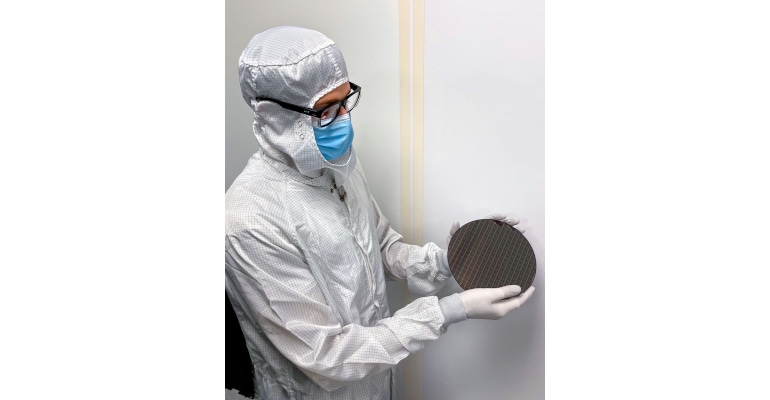Smart Microbots Can Walk Autonomously Using Electronic Brains
Researchers at Cornell developed the solar-powered machines, which can be used to perform tasks without the need for human intervention.
October 20, 2022

Researchers have created solar-powered microrobots outfitted with simply constructed electronic brains that allow them to walk autonomously without wireless or human control, they said. Scientists at Cornell University in various disciplines collaborated on the solar-power robots, which are 100 to 250 micrometers in size—or smaller than the head of an ant—and can walk without any of the external controls or wires that robots typically use for movement. The innovation paves the way for autonomous microscopic devices that can be programmed to perform a range of tasks without human intervention, including tracking bacteria, detecting chemicals, destroying pollutants of performing surgery, researchers said in an article for Cornell Chronicle.
The Cornell team had in fact already developed microscopic machines that could crawl, swim, walk, and even fold themselves up, but not without completely autonomous movement, they said. To generate motion in these previous inventions, researchers used wires to provide electrical current, or laser beams had to be focused directly onto specific locations on the robots.
“Before, we literally had to manipulate these ‘strings’ in order to get any kind of response from the robot,” observed Itai Cohen, professor of physics in the College of Arts and Sciences, as reported in the Chronicle article. “But now that we have these brains on board, it’s like taking the strings off the marionette. It’s like when Pinocchio gains consciousness.”
Simple Electronics for Robots
While it sounds like a complex task to create autonomous movement in microbots, researchers said that electronic brains that create the self-actuation are actually pretty straightforward. The mechanism in the new robots is actually a complementary metal-oxide-semiconductor (CMOS) clock circuit composed of a thousand transistors as well as an array of diodes, resistors, and capacitors, researchers said.
The integrated CMOS circuit works by generating a signal that produces a series of phase-shifted square-wave frequencies. These, in turn, set the robot's walking gait, which it executes on platinum-based actuators. Photovoltaics provide the power for both the circuit and the robot's legs, researchers said. “In some sense, the electronics are very basic," Cohen noted in the article. "This clock circuit is not a leap forward in the ability of circuits."
However, the trick to getting the electronics to work at all in a microbot was that they needed to feature a uniquely low-power design to accommodate an appropriately sized photovoltaics components to power the circuit, he said.
In the end, the finished circuits came delivered as 8-in. silicon-on-insulator wafers. At 15 microns tall, each robot brain was a “mountain” compared to the electronics that normally fit on a flat wafer, said postdoctoral researcher Michael Reynolds, one of the designers of the brain.
CMOS Integration
In fact, one of the key parts of the work that enabled the microrobots to be both so small and autonomous was the use of microscale actuators that can be controlled by low voltages and currents, noted Alejandro Cortese, who codesigned the brain with Reynolds and is CEO of OWiC Technologies, a company he also co-founded with two Cornell professors to commercialize optical wireless integrated circuits for microsensors.
“This is really the first time that we showed that yes, you can integrate that directly into a CMOS process and have all of those legs be directly controlled by effectively one circuit," he said in the article.
To demonstrate this CMOS integration, researchers designed three robots, which are about 10,000 times smaller than macroscale robots that feature onboard CMOS electronics and can walk at speeds faster than 10 micrometers per second.
One was a two-legged bot named "Purcell" in tribute to physicist Edward Purcell, who proposed a similarly simple model to explain the swimming motions of microorganisms, they said.
They also developed a six-legged "antbot" that was more complicated and walked with an alternating tripod gait, similarly to how an insect like an ant would walk. Finally, the team designed a four-legged "dogbot" that uses a modified circuit that receives commands via laser pulse to vary its walking speed, researchers said.
Future Application and Development
Researchers published a paper on their work in the journal Science Robotics.
The fabrication process that Reynolds designed for the project is also a platform that can enable other researchers to outfit microscopic robots with their own custom applications. These can range from microbots that detect chemicals to photovoltaic “eyes” that help robots navigate by sensing changes in light, researchers said.
“What this let's you imagine is really complex, highly functional microscopic robots that have a high degree of programmability, integrated with not only actuators, but also sensors,” Reynolds said.
Medicine also is a field that can benefit from this microbot design, he said, with potential application for microbots that, for example, can explore tissue and identify good cells and kill bad cells, he added.
About the Author(s)
You May Also Like

.jpg?width=300&auto=webp&quality=80&disable=upscale)

